|
Me Sahyadri |
|
July2018 |
|
Volume 5, number 17, # 71 |
|
Mysteries of Maval Caves – Forest Cave II |
Please use minimum 1280 pixel horizontal screen resolution for viewing. Please be patient while all the images in webpage are loaded. Please do not use the images for any commercial use without permission. Text in Marathi and English is not exact translation. Please give sufficient time to allow the photographs to load. Special thanks to all those who helped me during the compilation and for the help and guidance during the activity. |
|
|
|
|
देशाची आर्थिक प्रगती व्हावी असे सर्व नागरिकांना वाटणे सहाजिक आहे. अर्थकारणामुळे मिळणारा रोजगार, समृद्धी यासाठी सर्वांनाच आर्थिक प्रगती हवी हवीशी वाटते. आर्थिक प्रगती होताना, त्याचा दिर्घकाळात समाजावर, निसर्गावर, वातावरणावर दुष्परिणाम होणार नाही याची काळजी घेणे महत्वाचे आहे. मनुष्याच्या भावी पिढ्यांना पाणी, शुद्ध हवा, योग्य वातावरण मिळत रहावे अशी भावना मनात रुजणे महत्वाचे आहे. वाढत्या आर्थिक प्रगतीमुळे नैसर्गिक संपदेवर ताण येतो. प्रगतीसाठी प्रदुषण होते. जंगले, माळराने, व इतर अधिवास नष्ट होतात. वसुंधरेवर रहाणाऱ्या इतर जीवांचा मात्र मनुष्य फारसा विचार करत नाही. आर्थिक प्रगती करताना, मनुष्य निसर्गाची हानी करत आहे. मुळताच माणसाला निसर्गाचे महत्व समजणे हे सध्याच्या आपल्या प्रगत जीवनशैली मुळे अवघड झाले आहे. आर्थिक प्रगती, समाजाची प्रगती व निसर्ग संपदेची निगा, यांचा समतोल राखणे काळाची गरज आहे.
सह्याद्री (पश्चिम घाट) हा एक नैसर्गिक संपदेचा, वैविध्यतेचा, भौगोलिक व ऐतिहासिक ठेवा आहे. वाढत्या मानवी अतिक्रमणाचा, सह्याद्रीच्या विविध घटकांवर होणारा दुष्परिणाम भविष्यात आपल्यालाच धोका निर्माण करेल, यात शंका नाही. शुद्ध पाणी, हवा व उर्जा, भावी पिढीला मिळण्यासाठी, नंद्यांचे उगम असलेला सह्याद्री व त्याभागातील जंगले टिकवणे महत्वाचे आहे. सह्याद्रीच्या महत्वाच्या घटकांचे महत्व छायाचित्रांद्वारे प्रकट करण्याचा मी येथे प्रयत्न केला आहे. येथील पक्षी, प्राणी, वनस्पती, अधिवास, किल्ले व लेणी अशा विविध विषयांबद्दल आपण समजुन घेऊ.
|
|
As the economic development has taken the center stage, the balance between the environmental sustenance and socio economic development will be under the scanner. As most experts with balanced views have proclaimed, Indian wildlife and ecological system sustenance will be under threat, unless precautions are taken with the help of appropriate research and long term national interests. As we encounter the economic development, many habitats which indirectly or directly help sustainable development will be damaged. The awareness to gauge the success by sustainable development and not by year to year growth is a distant dream any environmentalist will assume in current scenario.
Western ghats, or Sahyadri as we all call it as, is a treasure trove of spectacular landscapes, biodiversity, flora, fauna, some amazing geological wonders and man made monuments. With the increasing pressure from human encroachment, all these elements are under stress and in turn are under depletion. Western ghats should be left untouched by human beings, to protect their future generations from getting short of resources, such as water, energy and clean air. The important elements of western ghats, which need protection are highlighted in the new version of Photo journal, Me Sahyadri Magazine.
|
|
|
| |
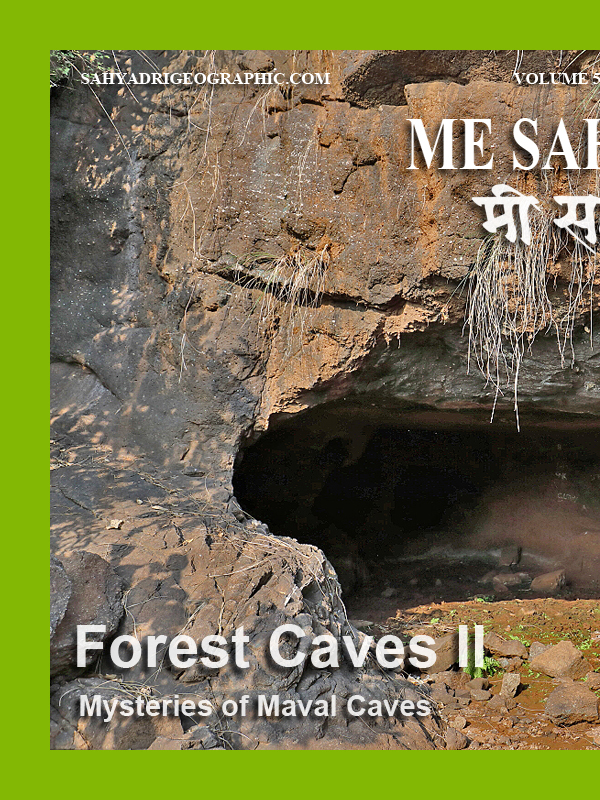 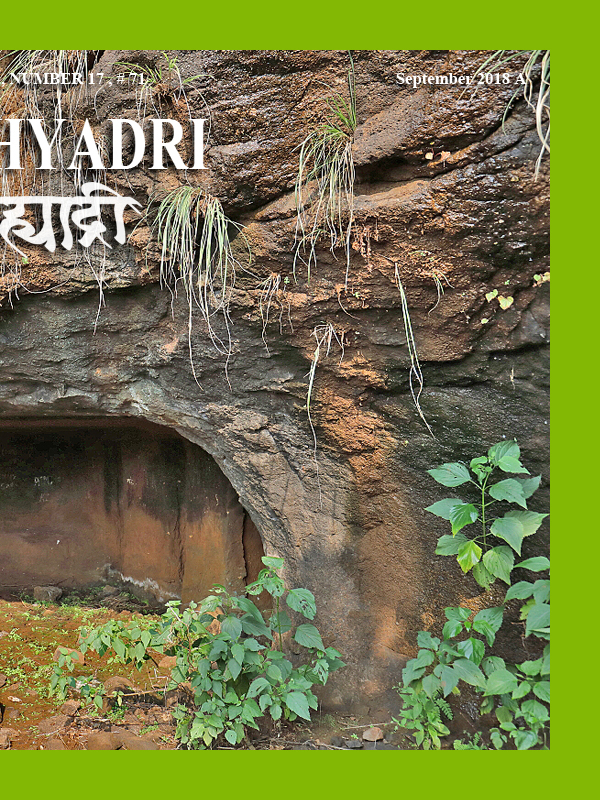
|
| |
| Me Sahyadri – September 2018 A
|
| |
|
|
मावळ लेणी मोहेमेचा सारांश :
मावळातील भाजे, बेडसे आणि कार्ले लेणी अप्रतिम आहेत. त्यामुळे या भागातील इतर लहान लेण्यांकडे फारसे कोणी फिरकत नाही. आम्ही चार समविचारी मित्रांनी मात्र या हरवलेल्या लेण्यांची शोधाशोध करण्याचे ठरवले. साईप्रकाश बेलसरे, निनाद बारटक्के, अमेय जोशी आणि विवेक काळे असा संघ तयार झाला. एकोणीसाव्या शतकात जेम्स बर्जेस आणि जेम्स फर्ग्युसन या दोन इंग्रज विद्वानांनी भारतातील लेणी धुंडाळली. त्यांनी १८८० साली "केव्ह टेम्पल्स ऑफ इंडिया" या पुस्तकाचे प्रकाशन केले. या पुस्तकात मावळातील लहान लेण्यांचा फारसा तपशिल नसला तरी, या मावळातील इतर लहान लेण्यांबद्दल ५-६ वाक्यांमध्ये आम्हाला त्रोटक का होईना माहिती मिळाली. त्यांनी उल्लेख केलेली, काही ठिकाण सापडली, तर काही ठिकाण काहीही केल्या सापडेनात. कदाचित न सापडलेली ठिकाण नष्ट झाली असावीत. पण मोहिमे दरम्यान नविन, ज्या ठिकाणांचा पुस्तकात उल्लेख नव्हता, पण ग्रामीण भागातल्या स्थानिकांना माहिती होती अशी ठिकाण सापडली.
जेम्स बर्जेस आणि जेम्स फर्ग्युसन या दोन इंग्रज विद्वानांनी लिहिलेल्या प्रत्येक शब्दाचा धागा म्हणुन वापर करायचे ठरले. कामांचे वाटप झाले.
शोध मोहिमेत लागणाऱ्या खाऊची सोय करणे, विषय आणि ठिकाणाचा आधी अभ्यास करणे, प्रवासाची सोय करणे, गावकऱ्यांकडे लेण्यांबद्दल चौकश्या करणे, मोहिमे दरम्यान गचपणातुन वाट शोधणे, लेण्याच्या अवशेषांची मोजमाप घेऊन त्याची चित्रे/नकाशे काढणे, छायाचित्रे काढणे, जि. पि. एस. यंत्रावर वाटेबद्दल माहिती नोंदवणे, लेण्यात लहान बारकावे शोधणे, लेण्यांचे विश्लेषण करणे, नोंदी करणे, अशी वेगवेगळ्या प्रकारची काम वाटुन घेण्यात आली.
प्रत्येक ठिकाणी जाताना, घरचा अभ्यास करावा लागला. जुनी पुस्तके, नकाशे धुंडाळले गेले. गावातल्या मित्रांची मदत झाली. गावागावात चौकश्या केल्या. गडद, लेणे, गुहा, कपार, भोगदा, विहार, पांडवांनी एका रात्री बनवलेली गुहा असे अनेक शब्द वापरुन चौकश्या झाल्या. बहुतेक वेळा असे काही नाही इथे ! तुम्ही कुठुन आलात ? असे उत्तर मिळाले. लेणे आहे का इथे कुठे असा प्रश्न विचारला तर आम्हाला बहुतेकांनी कार्ले/बेडसे/भाजे लेण्यांचा पत्ता दिला. पण बकऱ्या, गाई घेऊन डोंगरात फिरणारे गुराखी मात्र दरवेळेला मदतीला धाउन आले. वाटांचे आणि दिशांचे अंदाज मिळाले. जुजबी माहिती घेऊन ठिकाण शोधणे या प्रकाराचा चांगला सराव झाला. कधी काटेरी करवंदींच्या खालुन खुप सरपटाव लागल तर कधी घसाऱ्यावर हात टेकावे लागले.
लेण्यांमध्ये मोठे कोळी (स्पायडर), कातळ पाली, वटवाघळ, मधमाश्या, पाकोळ्या, घुबडं भेटले. आमच्या मुळे त्यांना उगाच त्रास झाला, असा अपराधीपणा वाटला. प्रत्येक शोधमोहिमेला यश आलेच असे नाही. काही ठिकाण सापडली नाहीत. तर काही ठिकाण आमच्याच मनाचे खेळ आहेत असे लक्षात आले. बहुतांश ठिकाणी कोणत्या ना कोणत्या प्रकारची जोखिम होती. वटवाघळ, लेण्यातील धुळ, काळोख, मधमाश्या, काटेरी वनस्पती, घसारा, गुहेतील ऑक्सिजन चा अभावआणि इतर न दिसणारे धोके यावर मात झाली. मोहिमेसाठी, विजेऱ्या, जि. पि. एस., मोजपट्या, दोऱ्या, लेजर यंत्र, नकाशे, गुगल मॅप, जाळीच्या टोप्या या सर्व जंत्रीचा उपयोग झाला. एकूण मिळुन २० नविन अपरिचित ठिकाण/वास्तु पहायला मिळाल्या, मावळाचा भुगोल जरा अजुन नीट लक्षात आला. नविन प्रश्न पडले आणि नविन कोडी सोडवयाला मिळाली. तर्क वितर्क झाले.
|
|
About the Maval Cave exploration :
The main caves in Maval region are so significant that other small hermit caves are often overlooked. We as a team of four like minded friends, decided to explore the Maval region for these small hermit caves. We explored and found few beautiful places. The very concept of creating a hermit cave somewhere high up in the hills is fascinating. These places often are full of tranquility and nothing else. With very little architectural evidences and clues, the academicians have obviously ignored these places. It was James Fergusson and James Burgess, during their exhaustive study of “Cave temples of India, 1880” mentioned few of these hermits in Maval region of Pune district. With the little clues and exhaustive investigation, team of four members, Saprakash Belsare, Amey Joshi, Ninad Bartakke and Vivek Kale started the exploration. The journey to locate, trek and analyse these hermit caves itself was fascinating. We met many villagers who were unaware of these places, but also met few shephards who were precisely aware of the hermits and gave us tentaive guidance.
There is a very brief mention about the misceleneous caves of Maval by James Fergusson and James Burgess in their work. Based on available information we decided to search these caves and monuments. The activities were planned. The food, travel , track exploration in difficult and routes full of foliage, enquiring the villagers about the caves, taking measurements and drawing skecthes and maps, photography, GPS data collection, making notes and analysing the information, observing the minor details of the caves etc activites were distributed amongst the team members. We met many bats, owls, geckos, lizards, large spiders, martins, honeybees during the treks. Often we felt sad that we disturbed them to see the caves. Most of these places are hazardous due to pitch darkness, bats, dust, thorny plants, honeybees, low oxygen level in caves and rock patches etc. Not all the attemps were successful. Sometimes we could not find the intended places and sometimes we realised that the cave was just our imagination and did not exist. Nevertheless we saw about 20 new strange caves/monuments during the exploration. The high intensity torches, GPS tool, measuring tapes and measuring laser tool, Honeybee protection caps, maps, google maps, photographs etc were useful during the mission.
In this photoessay, I have compiled the information and photographs of Forest Cave near Bhaje, Maval, amazing, simple but questions-thrower cave.
|
|
|
| |
  |
| The banner has been published here to improve the awareness of the trekkers and tourists visiting the various mountain forts, mountains in north western ghats. Please avoid accidents, by following good outdoor ethics such as no swimming in cisterns at mountain forts, no rock climbing without proper technical equipment and expertise. Please do not adventure, trek with any group or individually without understanding the risks associated. The frequency of the solo trekker fatalities have increased recently. Please strictly avoid solo treks. Please also avoid treks to mountains in large commercial groups, as it leads to damage to biodiversity of these high elevation ecological islands. Please respect the wildlife and biodiversity of the region. This has become more important as the ever increasing human interference is leading to severe damage to fragile ecosystems. Please be aware of the wildlife and biodiversity of the mountains before visiting these mountains. Please follow outdoor ethics. Follow ASI and Forest department rules. The concept of use of symbols for outdoor ethics was conceived and designed by "Sahyadri Trekker Bloggers Group". |
| |
|
|
| |
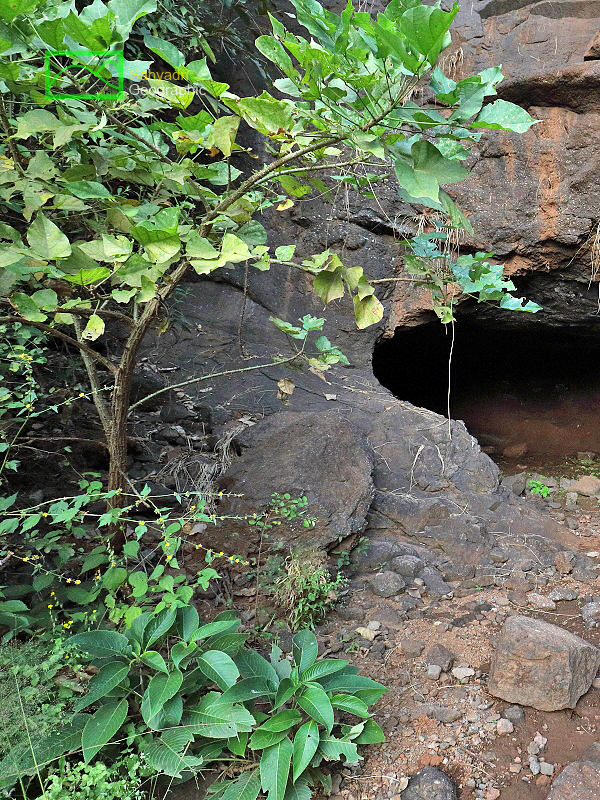  |
| |
| 1. Bhaje Forest Cave, Maval Tehsil, Pune district, Maharashtra, India |
| |
|
|
महाराष्ट्र राज्यातील पुणे जिल्ह्याच्या मावळ तालुक्यात, पश्चिम पुर्व पसरलेली कार्ले डोंगररांग पश्चिमेकडे सह्याद्रीच्या घाट माथ्यापासून पूर्वेकडे वाळख गावापर्यंत १३ किलोमीटर लांब पसरलेली आहे. या डोंगररांगेत कार्ले लेणी आहे. या डोंगरारांगेच्या दक्षिणेला एक समांतर डोंगररांग आहे. पश्चिमेकडे घाटमाथ्याजवळच्या कुरवंडे गावापासुन पूर्वेकडे शेलारवाडी पर्यंत पसरलेली ही विसापुर डोंगररांग अंदाजे ३५ किलोमीटर अंतरा पसरलेली आहे. विसापुर डोंगरारांगेत लोहगड, विसापुर किल्ले आणि भाजे, बेडसे, पाटण, शेलारवाडी लेणी आहेत. महाराष्ट्र राज्यातील पुणे जिल्ह्याच्या मावळ तालुक्यात, भाजे गाव विसापूर डोंगररांगेच्या कुशीत वसलेले आहे. विसापूर डोंगर रांगेत विसापूर किल्याच्या उत्तर बाजूला , भाजे गावाच्या दक्षिणेला डोंगरावर अंदाजे ६०-७० मीटर उंचीवर (गावपातळी पासून) भाजे लेणी कोरली आहेत. या लेण्यांच्या दक्षिणेला जंगलात अजून काही लेणी आहेत.
|
|
Bhaje is a village in Maval tehesil in Pune district in the state of Maharashtra in India. The village is located at the base of the one of the Sahyadri hill ranges on the Deccan plateau. Spread in west–east orientation. Karle hill range, is about 13 kilometer in length, from western ghat main ridge up to the Walakh village towards east. This hill range has important archaeological site at Karle. Further to south there is another parallel hill range spread from the Kurwande village at western ghat ridge, south of Lonavala up to the village Shelarwadi hills towards east. Visapur fort, Lohgad forts, Bhaje Caves and Bedse caves are located in this “Visapur” hill range. In the northern face of Visapur hill range, there are ancient caves near village of Bhaje. Most people visit the famous Bhaje caves near Bhaje village. However there are two early caves in the forest on the hill. These early caves are very important and these caves tell us many aspects evolution of rock cut caves.
|
|
|
| |
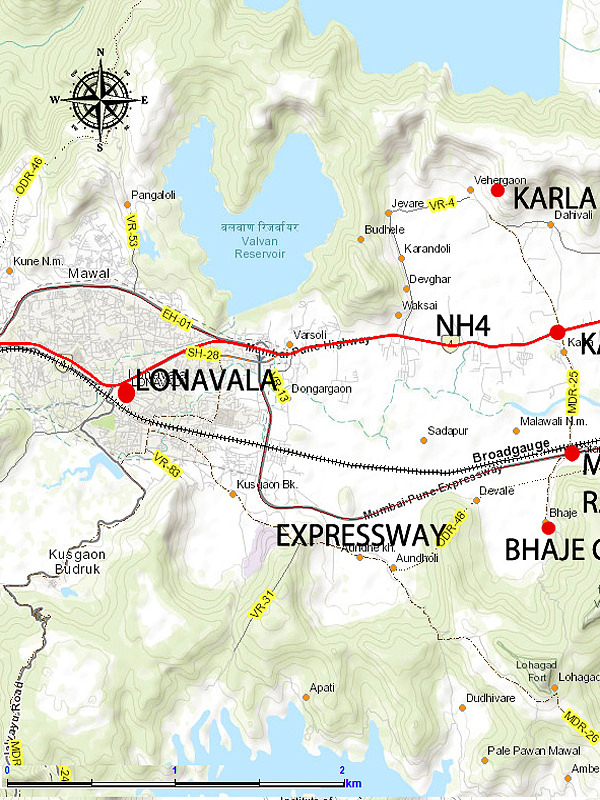 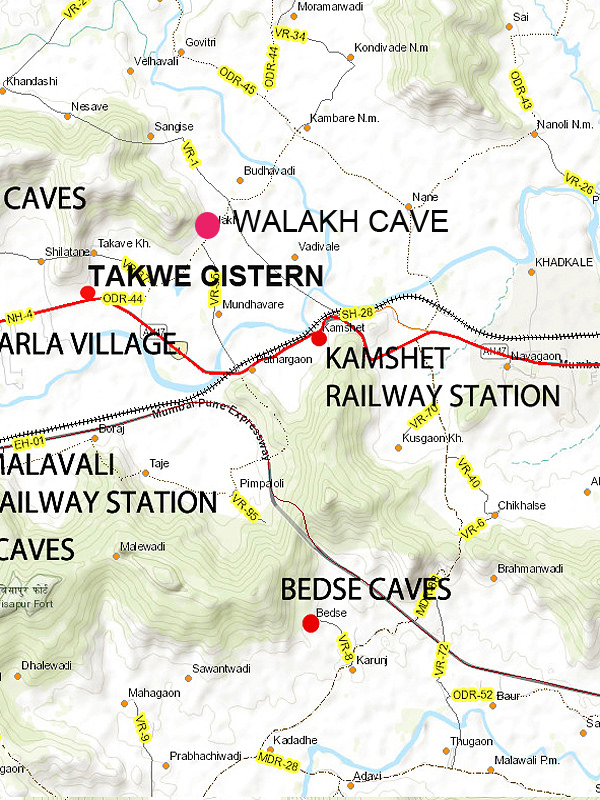 |
| |
| 2. Map of region, Bhaje Forest Cave, Maval Tehsil, Pune district, Maharashtra, India |
| |
|
|
कार्ले आणि विसापुर डोंगरारांगेच्या मधल्या पठारी इंद्रायणी नदी वाहते. इंद्रायणी नदीचा उगम लोणावळे भागातल्या डोंगराळ भागात होतो. इंद्रायणी पश्चिमेकडून पूर्वेकडे वाहते आणि पुढे भीमा नदीला जाऊन मिळते. कोकणात कल्याण आणि सोपारा येथे प्राचीन काळातीळ व्यापारी बंदरे आहेत. या बंदरांपासून घाटावरच्या मध्य महाराष्ट्रातील प्रमुख व्यापारी केंद्रांकडे (पैठण, तेर इत्यादी) जाणारा व्यापारी मार्ग बोर घाटातून घाटावर आल्यावर मावळातून इंद्रायणी नदीला समांतर होता. आज याच भागातुन मुंबई - पुणे राष्ट्रीय महामार्ग आणि मुंबई - पुणे मध्य रेल्वे मार्ग जातो. इंद्रायणी नदीच्या खोऱ्यातुन प्राचीन व्यापारी मार्ग होता. भाजे गाव या इंद्रायणी खोऱ्यात वसलेले आहे.
|
|
Between Karle range and Visapur range, Indrayani river flows from west to east, and the plateau is called as Indrayani basin in this note. Indrayani river originates in the hills around Lonavala. The ancient trade route climbs up the western ghat ridge from the Konkan over to the Deccan plateau at Lonavala. Once atop Deccan plateau at Lonavala, the trade route is aligned parallel to Indrayani river. This ancient trade route was to transport the goods from the eastern economic centres on the Deccan plateau to Kalyan and Sopara ports on the western coast of India. Today the modern Mumbai-Pune road and Central railway line passes through the same Indrayani river basin, was used for ancient trade in the past. Bhaje village is located in this Indrayani river basin.
|
|
|
| |
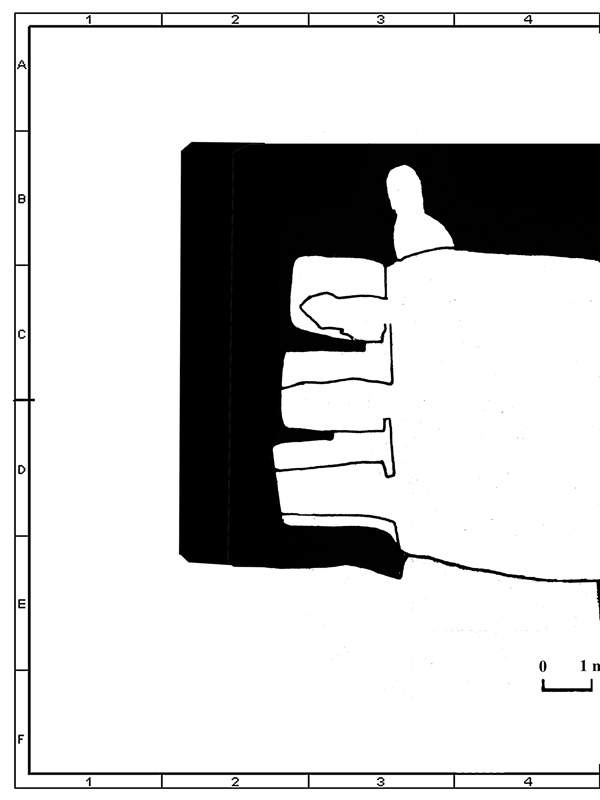 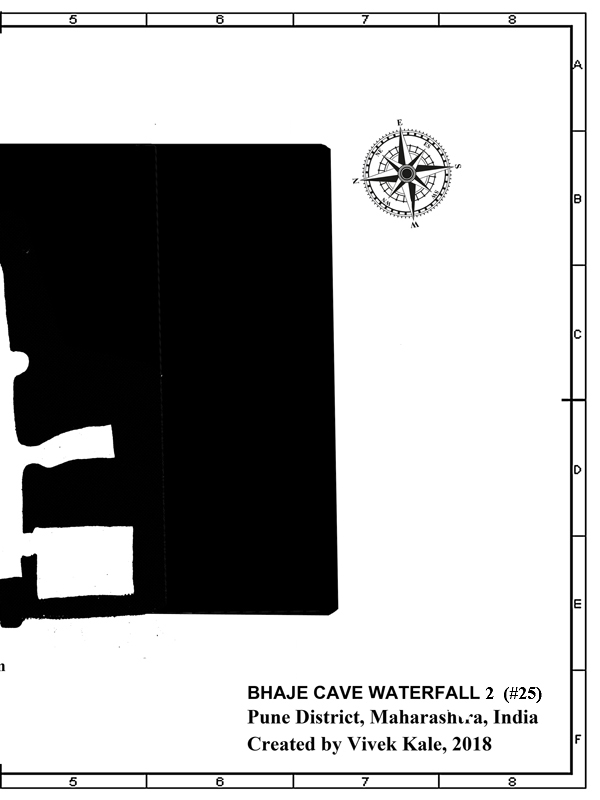 |
| |
| 3. Layout - Bhaje Forest Cave, Maval Tehsil, Pune district, Maharashtra, India |
| |
|
|
इंद्रायणी खोऱ्यात भाजे हे लहान गाव,विसापूर किल्याच्या उत्तरेस वसलेले आहे. भाजे गाव लोणावळे पासून अंदाजे १२ किलोमीटर अंतरावर तर पुण्यापासून अंदाजे ६० किलोमीटर अंतरावर आहे. भाजे गावाच्या दक्षिणेला डोंगरावर अंदाजे ६०-७० मीटर उंचीवर जंगलात डोंगरकड्यात दोन लेणी आहेत. गावातुन येथे येण्यासाठी वाट आहे. मुख्य भाजे लेण्यांच्या दक्षिणेला ४ मोठे धबधबे आहेत. यातील डावीकडील तीन धबधब्यात लेणी आहेत. पहिल्या धबधब्यात लेणी मुख्य भाजे लेण्यांच्या टोकाला (दक्षिण टोकाला) पाहावयास मिळतात. मात्र इतर दोन धबधब्यात लेणी दूर जंगलात आहेत
|
|
Bhaje village is located on the northern base of Visapur hill range north of Visapur fort, close to the Mumbai-Pune expressway. The Bhaje village is located at about 12 kilometer from Lonavala village. It is located at about 60 kilometer from Pune city-centre. There are two interesting excavations locations around this village part from the main Bhaje cave complex. The most prominent off these excavations is the cave high up in the hill, in the forest.
|
|
|
| |
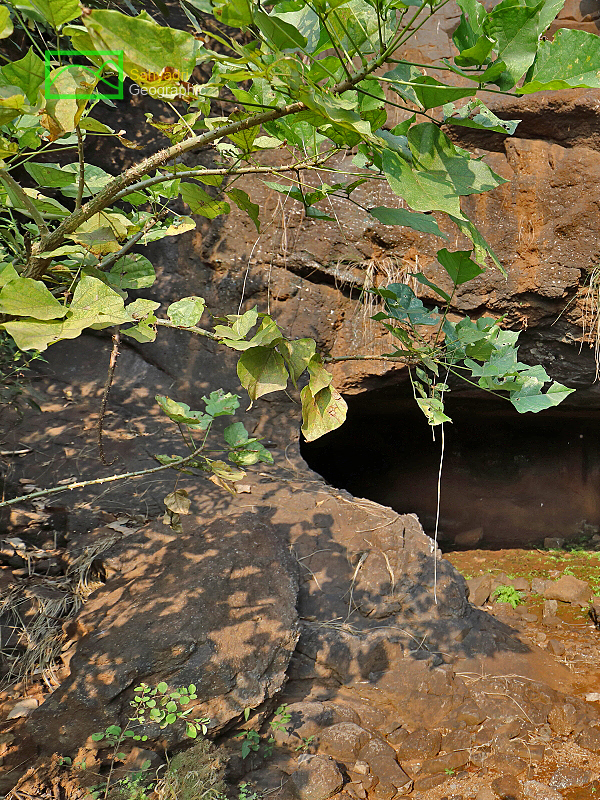 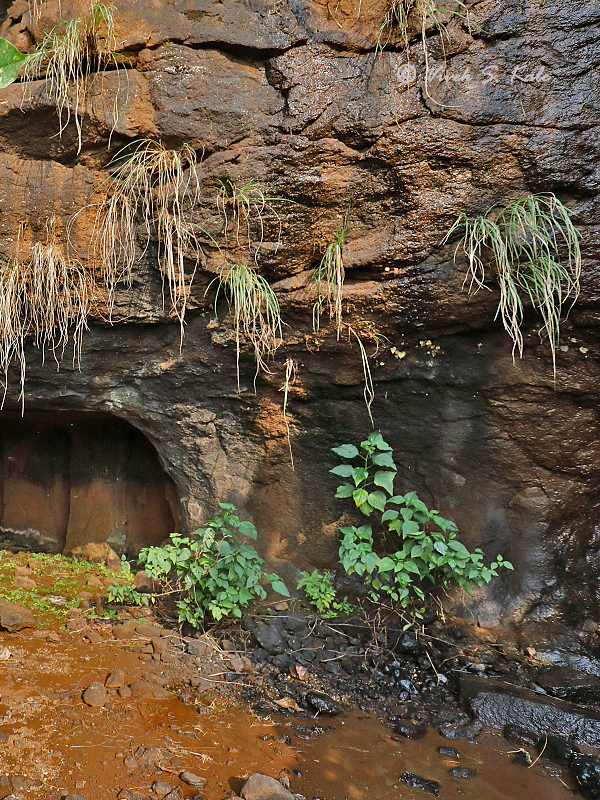 |
| |
| 4. Bhaje Forest Cave, Maval Tehsil, Pune district, Maharashtra, India |
| |
|
|
भाजे जंगलातला विहार :भाजे गावांच्या दक्षिणेला डोंगरावर अंदाजे ६०-७० मीटर उंचीवर जंगलात डोंगरकड्यात दोन लेणी आहेत. गावातुन येथे येण्यासाठी वाट आहे. या लेण्यातील सर्वात दक्षिणेकडे असलेले लेणे हा एक लहान दंडगोलाकृती चैत्यगृह आहे. हे लेणे तिसऱ्या धबधब्यात आहे.
या लेण्यांच्या अंदाजे ४० मीटर अंतरावर उत्तरेकडे दुसऱ्या धबधब्यात एक विहार आहे. विहाराचे काम मूळ नैसर्गिक लेण्यात चालू झालेला असावे.
विहारात मध्यभागी एक दालन आहे. दालनाच्या दोन्ही बाजूस प्रत्येकी ३ अशा एकूण सहा खोल्या कोरलेल्या आहेत. यातील ४ खोल्यांचे काम बरेच पूर्ण झाले आहे. दोन खोल्यांचे काम थोडेसेच झाले आहे. ऐन धबधब्यात असल्याने पावसाळ्यात वापर कठीण आहे तयाची जाणीव होताच काम अर्धवट सोडण्यात आले असावे. खोल्यात बाक आहेत. दोन खोल्यांच्या मध्ये पातळ भिंत असल्याने ठिकठिकाणी ती तुटली आहे. लेण्यात गाळ भरला आहे. लेण्यांचा दर्शनी भाग नैसर्गिक आहे. भाजे लेणी समूहातले सुरुवातीच्या काळात बांधलेले हे एक लेणे असावे.
|
|
Description of the Cave: The Bhaje Forest cave is located high up on the hill south of the village. The cave is carved out in the scarp at second water fall from Bhaje cave complex. There is a natural cavern near the waterfall. This natural cavern has been exploited by the excavators to make a vihar with six rooms.
This cave has six vihara rooms. The excavation work of few caves have been almost completed. However the entire carving work is incomplete. The benches in the rooms are unfinished except couple of caves. The cave is located in the waterfall. Due to inconvenience the cave making activity seems to have been discontinued. Out f six rooms, three rooms have been almost about to be completed. The remaining three cave rooms are in “Just work started” state. These caves seems to have been created in the summer and later in rainy season the inconvenience seems to have been realised.
The fascination of early cave makers towards the waterfalls is realised here.
|
|
|
| |
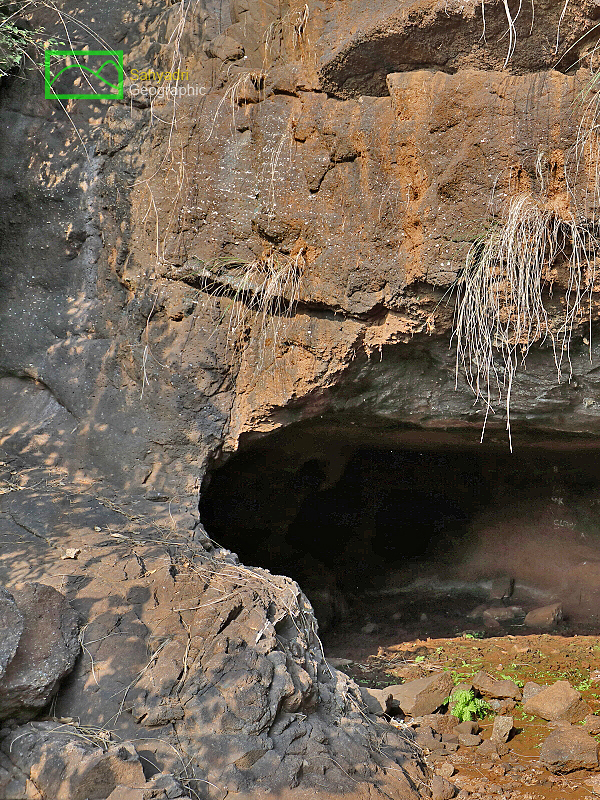  |
| |
| 5. Vihar, Bhaje Forest Cave, Maval Tehsil, Pune district, Maharashtra, India |
| |
|
|
| |
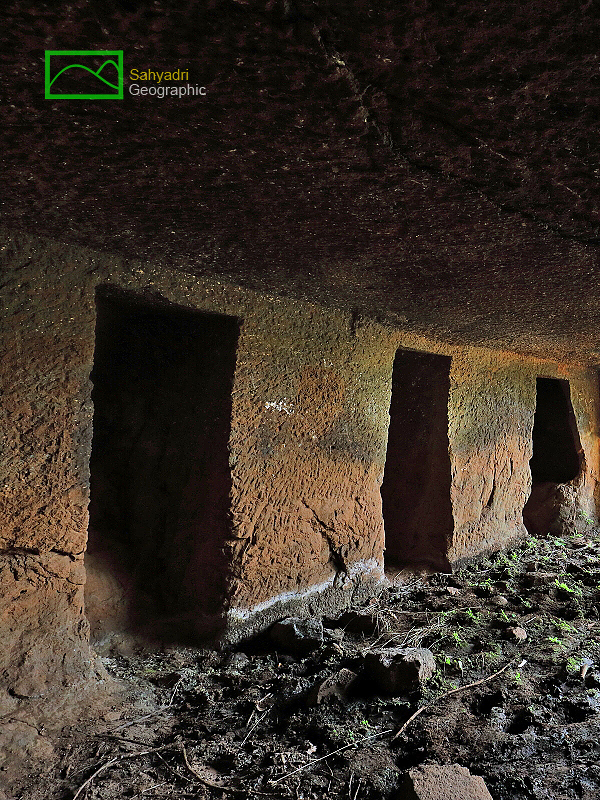 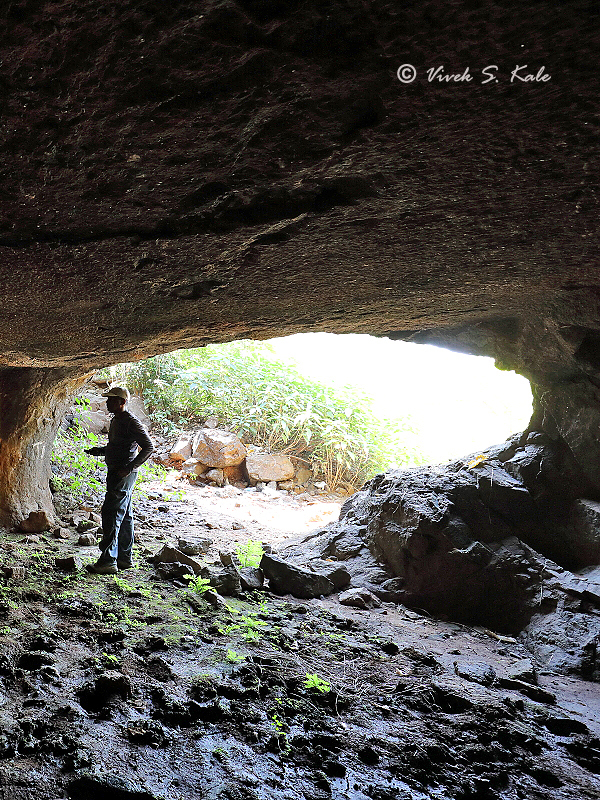 |
| |
| 6. Vihar, Bhaje Forest Cave, Maval Tehsil, Pune district, Maharashtra, India
|
| |
|
|
| |
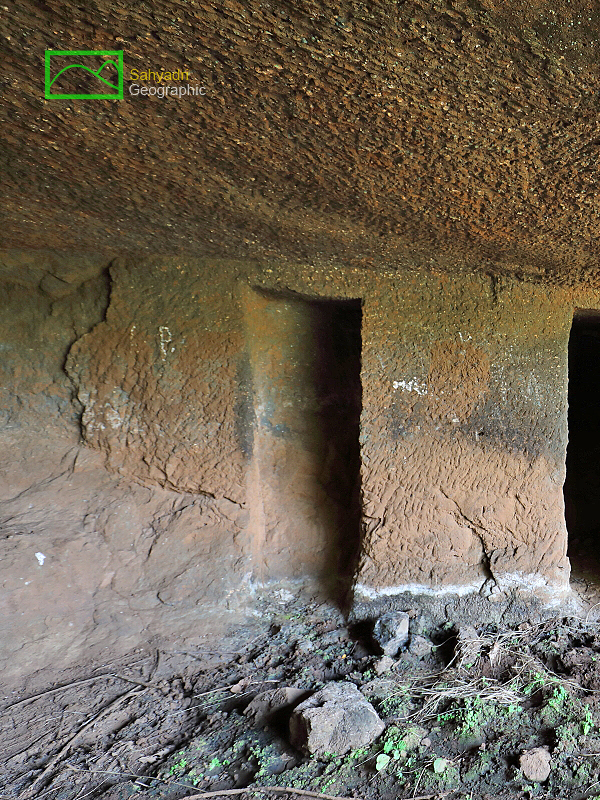 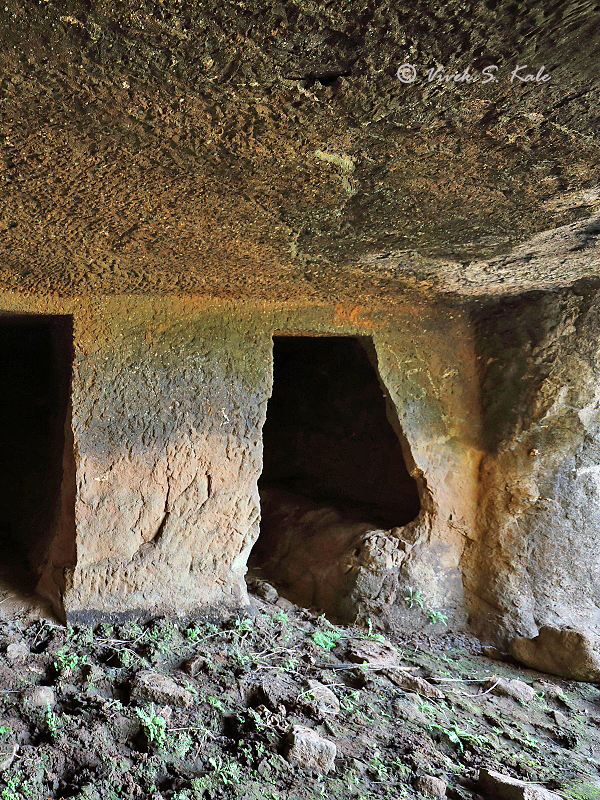 |
| |
| 7. Vihar, Bhaje Forest Cave, Maval Tehsil, Pune district, Maharashtra, India
|
| |
|
|
| |
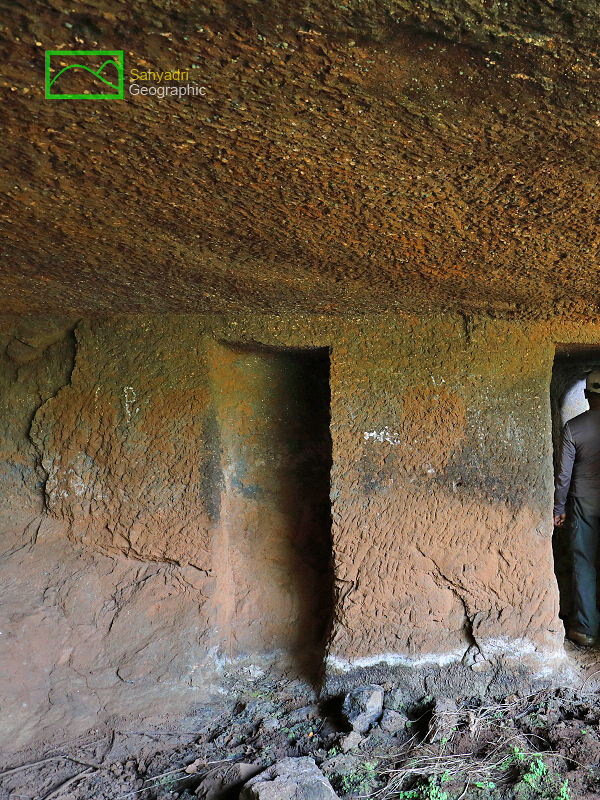 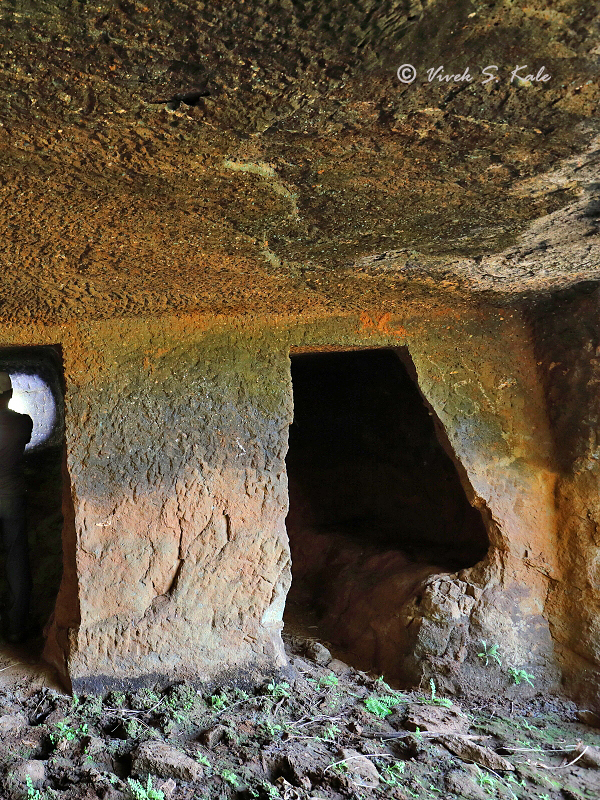 |
| |
| 8. Vihar,Bhaje Forest Cave, Maval Tehsil, Pune district, Maharashtra, India
|
| |
|
|
| |
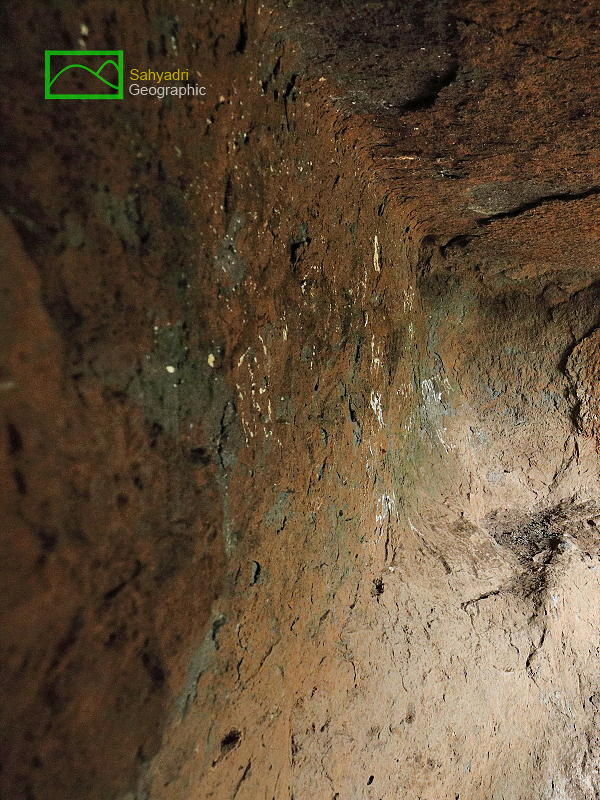  |
| |
| 9. Vihar, Bhaje Forest Cave, Maval Tehsil, Pune district, Maharashtra, India |
| |
|
|
| |
 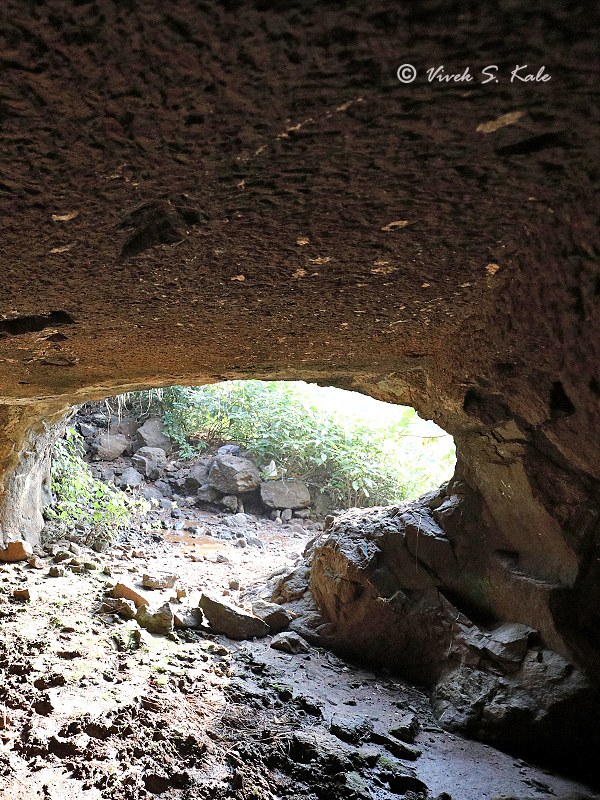 |
| |
| 10. Vihar, Bhaje Forest Cave, Maval Tehsil, Pune district, Maharashtra, India |
| |
|
|
| |
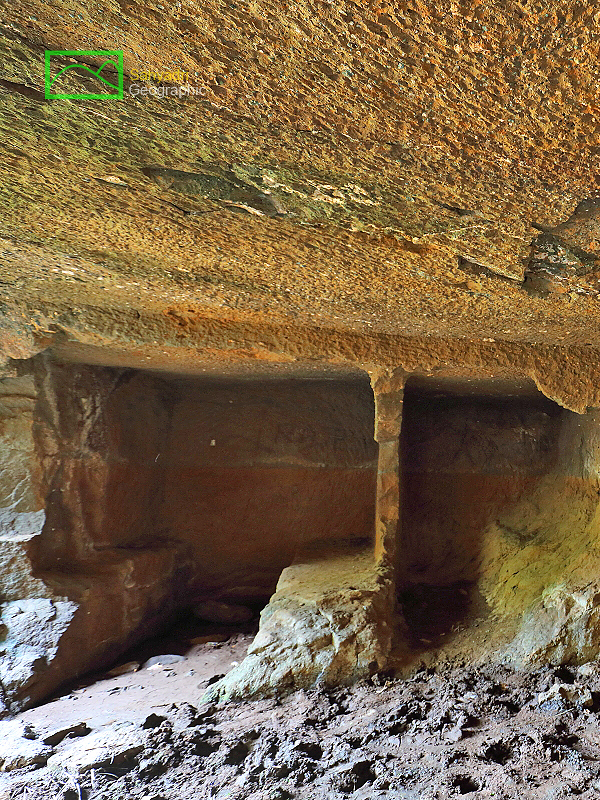 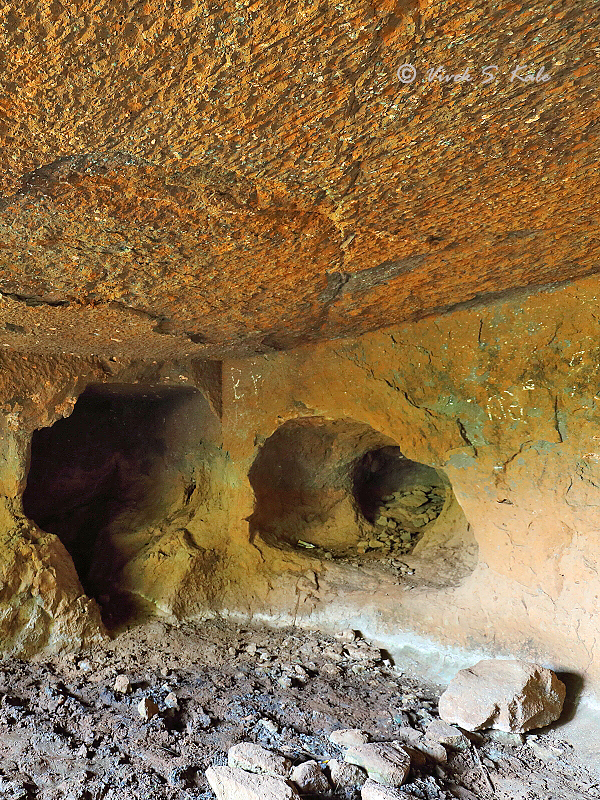 |
| |
| 11. Vihar, Bhaje Forest Cave, Maval Tehsil, Pune district, Maharashtra, India |
| |
|
|
| |
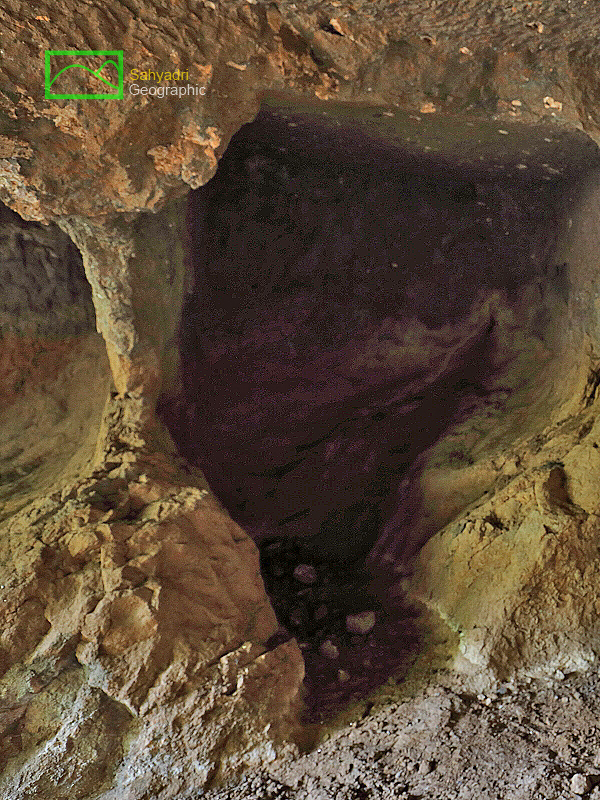  |
| |
| 12. Vihar, Bhaje Forest Cave, Maval Tehsil, Pune district, Maharashtra, India |
| |
|
|
| |
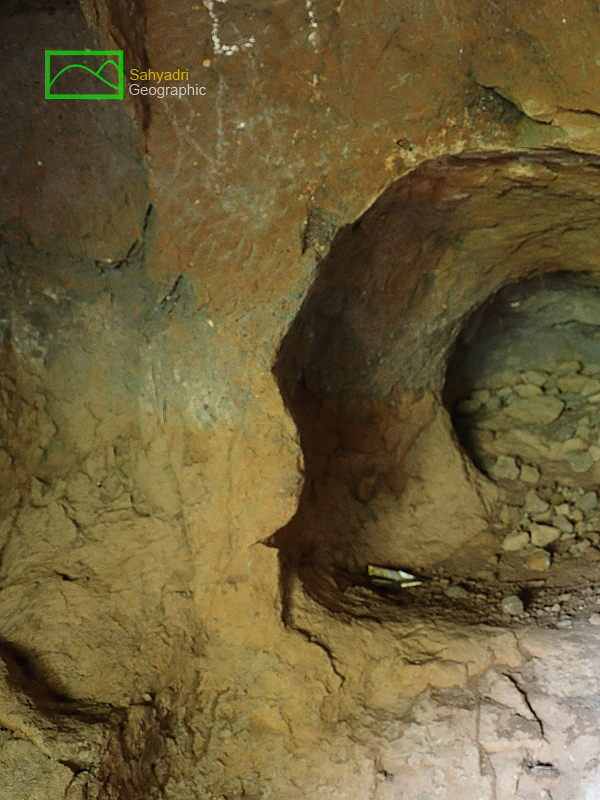 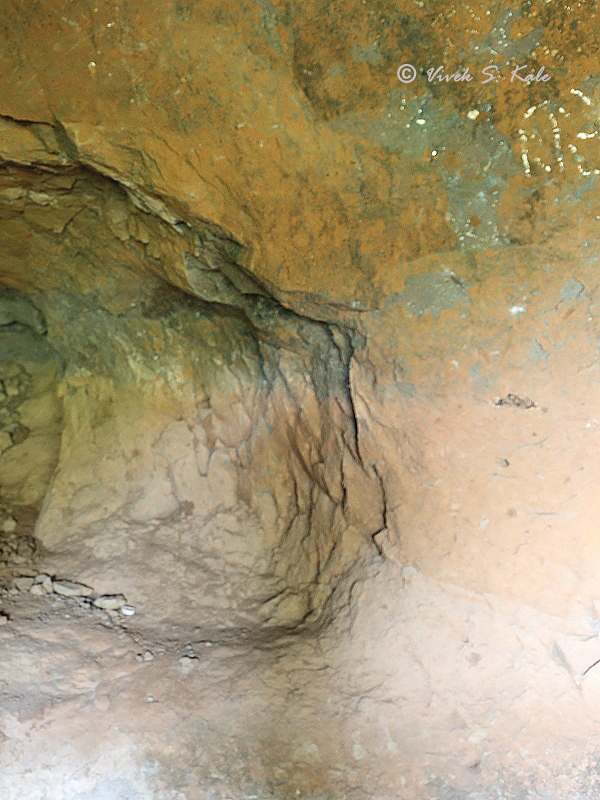 |
| |
| 13. Vihar, Bhaje Forest Cave, Maval Tehsil, Pune district, Maharashtra, India |
| |
|
|
| |
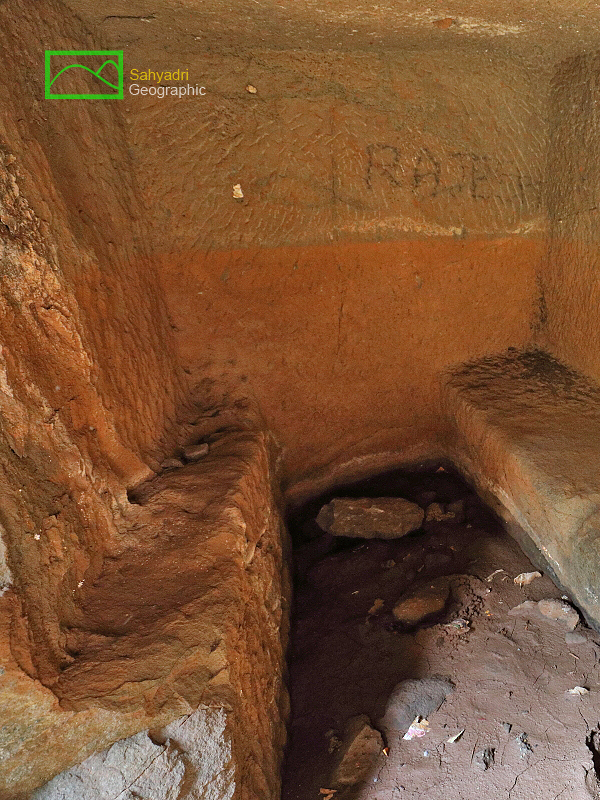  |
| |
| 14. Vihar, Bhaje Forest Cave, Maval Tehsil, Pune district, Maharashtra, India |
| |
|
|
| |
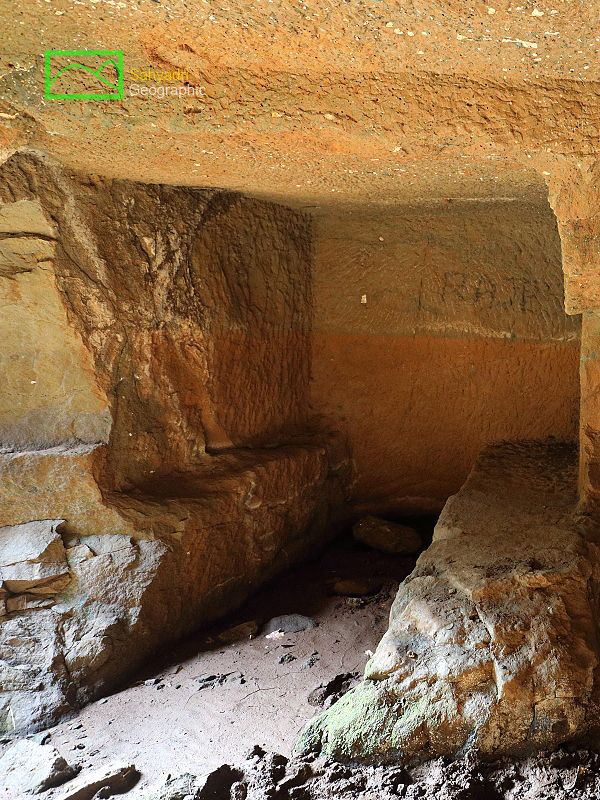 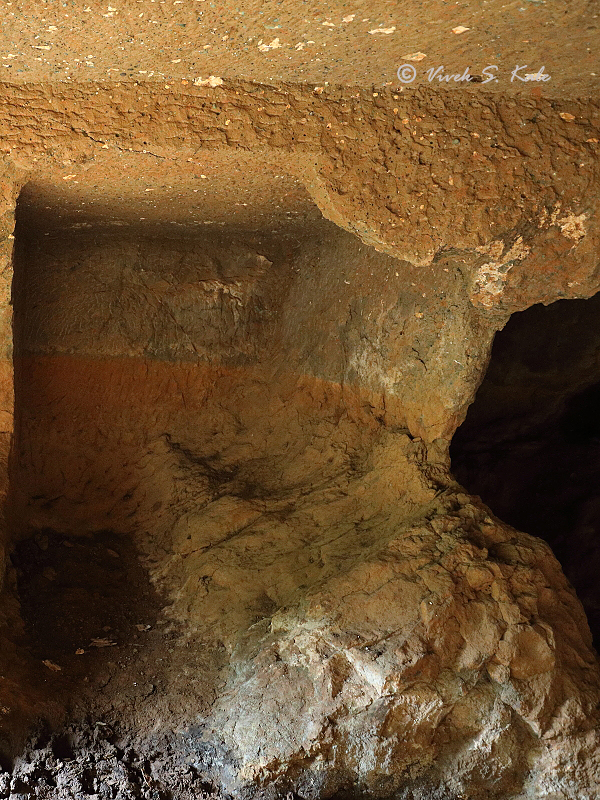 |
| |
| 15. Vihar, Bhaje Forest Cave, Maval Tehsil, Pune district, Maharashtra, India |
| |
|
|
| |
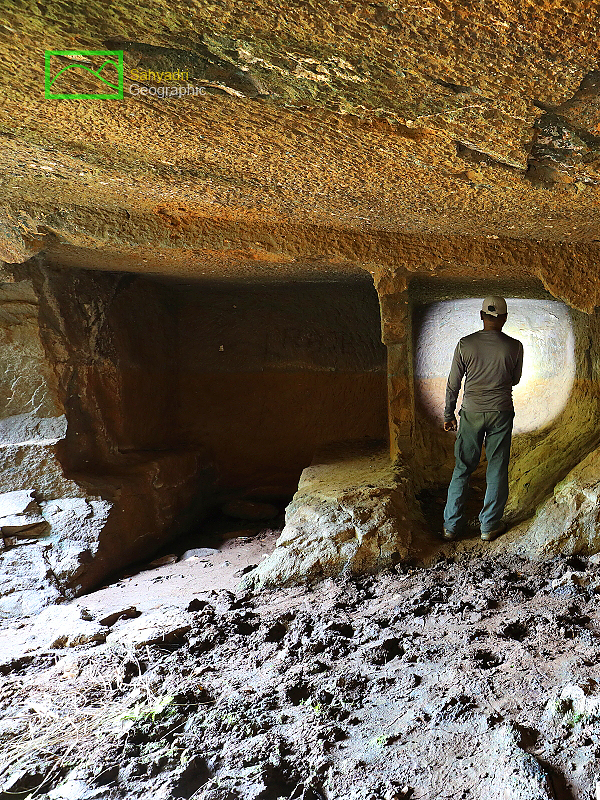 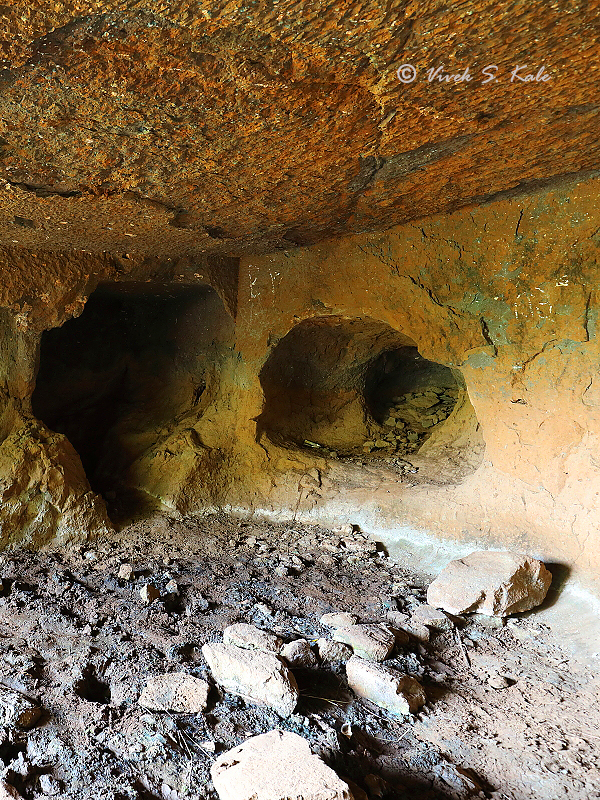 |
| |
| 16. Vihar, Bhaje Forest Cave, Maval Tehsil, Pune district, Maharashtra, India |
| |
|
|
| |
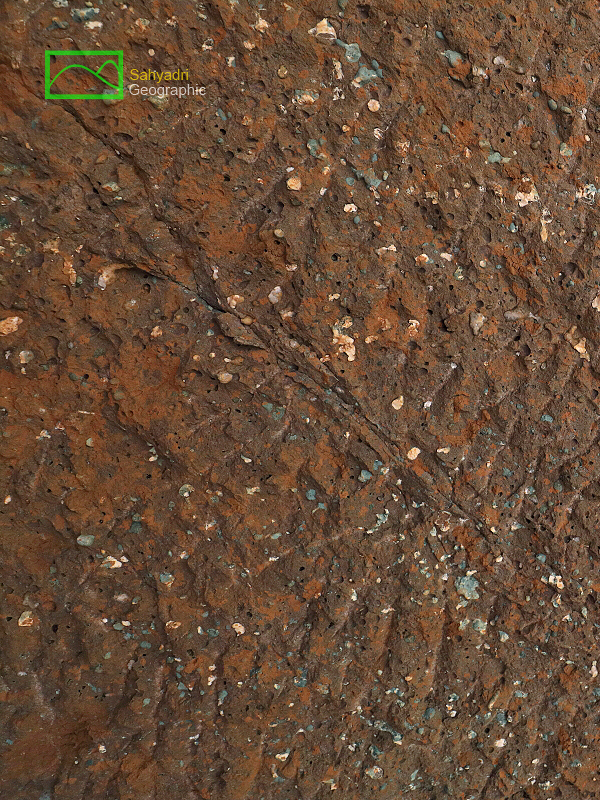 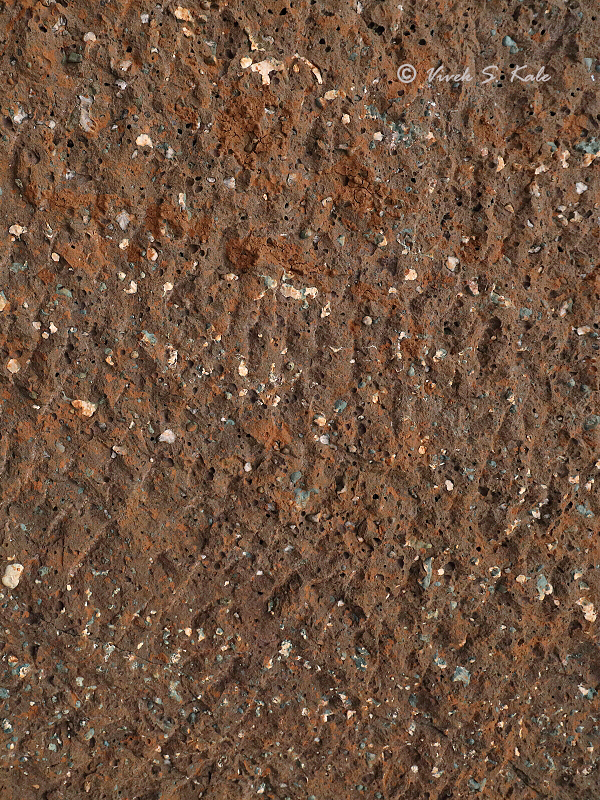 |
| |
| 17. Chiesel marks, Vihar, Bhaje Forest Cave, Maval Tehsil, Pune district, Maharashtra, India |
| |
|
|
| |
 |
| |
|
|
References :
1. Cave temples of India, London, 1880, Fergusson James and Burgess James.
2. Gazetters of Bombay Presidency, Poona District, Volume XVIII, 1885.
3. Buddhist architecture of western India, 1981, S. Nagraju.
4. Myth and Reality, Studies in the Formation of Indian Culture
by D. D. Kosambi
5. History and Society, Problems of Interpretation, by D. D. Kosambi
|
| |
|
|
| |
|







































